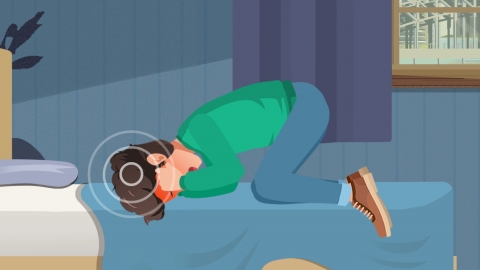What are the treatment methods for tuberculous meningitis?
Generally, the treatment methods for tuberculous meningitis mainly include anti-tuberculosis drug therapy, symptomatic supportive therapy, glucocorticoid therapy, management of increased intracranial pressure, and nutritional support therapy. A detailed explanation is as follows:
1. Anti-Tuberculosis Drug Therapy
This treatment is the core method and requires the combined use of multiple anti-tuberculosis drugs to eliminate Mycobacterium tuberculosis. Patients can take isoniazid tablets, rifampicin capsules, pyrazinamide tablets, and other medications as directed by a physician. These medications inhibit or kill tuberculosis bacteria through different mechanisms of action, preventing bacterial proliferation within the cranium, controlling inflammation spread, and laying the foundation for disease recovery.

2. Symptomatic Supportive Therapy
Patients often experience symptoms such as fever and headache, which require targeted management. Fever can be relieved through physical cooling methods. When headache is evident, analgesic medications such as ibuprofen sustained-release capsules or paracetamol tablets can be used under medical guidance. It is also necessary to maintain airway patency, prevent aspiration of vomitus, and avoid complications.
3. Glucocorticoid Therapy
Tuberculous meningitis can trigger intracranial inflammatory responses, leading to meningeal adhesions. Patients can take medications such as dexamethasone tablets, prednisone tablets, or methylprednisolone tablets as directed by a physician. These medications can reduce inflammatory exudation, inhibit fibrous tissue proliferation, prevent meningeal adhesion, minimize damage to neural tissues, and alleviate symptoms associated with increased intracranial pressure.
4. Management of Increased Intracranial Pressure
Elevated intracranial pressure can endanger the patient's life and requires prompt intervention. Under medical guidance, intravenous infusion of mannitol injection can be administered rapidly to reduce intracranial pressure. Alternatively, glycerol fructose injection can be used to alleviate cerebral edema through its hyperosmotic effect. If necessary, ventricular puncture and drainage can be performed to directly drain cerebrospinal fluid and rapidly relieve symptoms of increased intracranial pressure.
5. Nutritional Support Therapy
Due to high disease-related consumption, patients must ensure adequate nutrient intake. A diet rich in proteins and vitamins should be provided. For patients unable to eat normally, nutritional supplements can be administered via a nasogastric tube. Electrolyte levels should be monitored regularly, and any electrolyte imbalances should be promptly corrected to maintain normal metabolic function and enhance immune resistance.
In addition, patients must remain absolutely bedridden during treatment and be kept in a quiet and clean environment. Medications should be taken strictly as prescribed, without擅自 stopping or adjusting the dosage. Regular follow-up tests such as cerebrospinal fluid analysis and cranial CT scans are necessary to monitor disease progression. If symptoms such as worsening consciousness impairment or seizures occur, timely medical attention should be sought to adjust the treatment plan.




